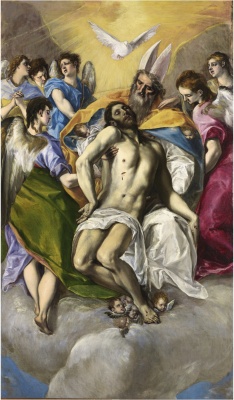Descripción de la Exposición
The Raft - Art is (not) Lonely is an exhibition curated by Jan Fabre and Joanna De Vos and it will be on view from October 2017 to April 2018, in Mu.ZEE and at several locations in Ostend. The show is about art as a vessel and what it conveys. The Raft engages in a dialogue with Ostend, a city near the sea with a history and a particular perfume. Spread over several venues in the Belgian seaside resort, the dramaturgy of the exhibition departs from the Museum of Modern and Contemporary Art (Mu.ZEE) with a careful research of Théodore Géricault’s painting The Raft of the Medusa (1818) and Jan Fabre’s utopian raft Art is (not) Lonely (1986). Two works that are separated by 170 years and that originated in completely different settings, yet that also tune in to each other through the imagination of the expedition and the destiny of the artist, a theme that is also a metaphor of the human condition.
A tempest, a shipwreck, a raft at sea. A few survivors cling to life. They want to live. This theatrical and semi-romantic image inspired numerous eighteenth- and nineteenth-century artists. Turner had himself tied to the mast of a ship to experience personally how savage the storms at sea could be. He translated his impressions directly in his work. Théodore Géricault was so impressed by the wreck of the Medusa, a French frigate that went down in 1816, that he immortalized the few survivors on a makeshift raft in many drawings, oil studies and finaly a large oil painting. The loneliness, anxiety and desperation, the urge to survive, to live, if necessary to kill to survive,... All these horrors take us from nineteenth- and twentieth-century history to our own time. Numerous artists have imagined themselves on a raft before, trying to understand the desperation and hardships to translate these into a work of their own. Not just tragedy, but also adventure is inextricably linked with all this. The explorer who sets out on his or her voyage of discovery, inspired by curiosity!
When Géricault first showed The Raft of the Medusa , it caused an intellectual and emotional outcry. The clever composition zooms in on the human drama and the changing status of the artist. However, the image was burned on the retina as a scathing indictment of the royal house, as well as a silent jeer at the institution of slavery. The fierce response to the painting actually came as no surprise, as it was the first time in history that an artist thus explicitly referred to a contemporary issue. Challenging the establishment was not done. But then, what was this artistic dimension that was overshadowed by socio-economical concerns? Géricault’s raft represents the desolation of the artist after the eclipse of the Ancien Régime—now the artist as it were found himself alone at sea because the traditional forms of patronage started to disappear. The fact that this ‘total creative freedom’, in the context of the tradition and entangled with the emerging amalgam of art movements, was considered by many generations to come as both a threat and a present, is aptly expressed by Jan Fabre in the manifest he wrote with his own blood. We read for example ‘Victory over chance. Every artist-animal for himself, like shipwrecked sailors’ (Jan Emiel Constant Fabre, Lyon 2001).
The artist, though he is alone on his voyage, is not lonely. There is ambiguity in this sense. On the one hand, the artist needs seclusion and introspection to be able to set a course; on the other hand, the raft of the artists floats on the longing to connect and the longing for spectacle. The various moods, rocking on hope and desperation, promise and heaviness of heart, vision and being blinded, illusion and reality, can be shared through art. Art is (not) Lonely, the title of a thinking model that goes back to the 1980s, is a miniature world that conveys Jan Fabre’s view of being an artist. To his raft he added a gym, an athletics track and a soccer field: a sorrow shared is a sorrow halved. He refers to the stamina of hope versus fate. Art and communication as the driving forces that propel us to a promising future.
In the context of these themes and the exhibition dramaturgy described, we ask a number of contemporary artists to present their own interpretation of the theme of The Raft, with either existing work or with new work made specially for this exhibition. The Raft : the raft as a monument, a utopian model, a legacy of manual manufacture and the trace of a physical process, the idea of experiment and expedition, the raft from a historical and/or contemporary, political, poetical, social, national or global perspective...

Exposición. 18 feb de 2025 - 15 jun de 2025 / Museo Nacional del Prado / Madrid, España

Formación. 01 oct de 2024 - 04 abr de 2025 / PHotoEspaña / Madrid, España